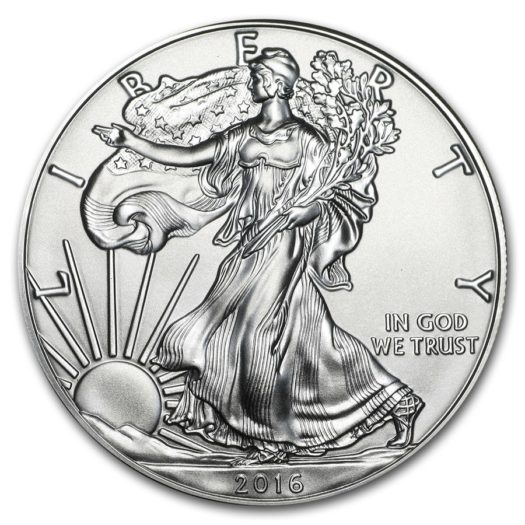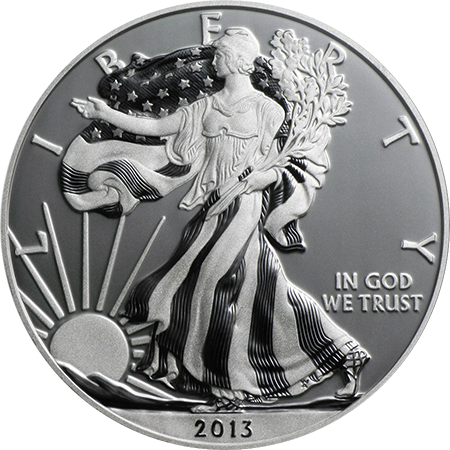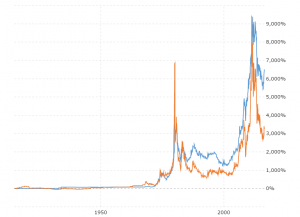Understanding Coin Finishes
The US Mint releases new coins regularly, and within a release there can be several different versions of the same coin, with names like ‘proof’, ‘uncirculated’ and other terms too. If you are a novice coin collector, for pleasure or profit, these terms can be confusing, and since they affect the appearance and value – both present and future – of coins, it is worth taking a little time to understand them better. With that in mind, let’s take a look at the different finishes on coins, and what it all means.
Bullion
This is the basic finish – the ‘standard’ look if you like. A bullion coin has a uniform surface finish that is neither completely matte, or very shiny – perhaps what we could call a ‘satin’, or even slightly ‘frosted’ finish. Bullion coins are called that because they are stamped in large quantities, and so their value lies in the value of the metals they contain, not in very much else. Since bullion coins are cheaper, those who primary purpose in collecting is their intention to cash in the metal value, at some point in the future, will usually collect bullion.
Uncirculated Proof
These coins have a mirrored finish to the background – the ‘field’ – and the sculpted details – the ‘devices’ – have a more matte appearance, like that of the bullion coins. This has the effect of making the details stand out, showing the sculpting and features more clearly. This effect is produced by polishing the dies before they are engraved, so that the un-engraved areas remain smooth, transferring that finish to the coins as they are made. If the coins were put into circulation, the polish would soon wear off, so it ‘proves’ that the coin has never been used. This type of coin is the basic form for collectors who collect for interest in the specifics of the coin itself.
Reverse Proof
As the name suggests, this is simply a proof coin where the field is matte and the devices are polished.
Burnished
This finish is the basic frosted bullion finish, but with some buffing and polishing to create an increased luster to high parts of the coin, enhancing its appearance.
Enhanced Uncirculated
These coins are sometimes called ‘Enhanced Proof’ by collectors, but that is technically wrong, in that the US Mint does not use that term for these coins. Here an addition, intermediate level of finish is used on the coin, so that there are two levels of matte finish, plus the usual mirrored finish. The field is lightly frosted, and the devices are mirrored in some areas, and heavily frosted in others. The goal is to increase the visibility of the details on the coins. Although the depth of engraving is the same on both Bullion and Proof coins, the light-scattering effect of the mirrored field is seen by many collectors to obscure the all-important details on the devices, so this finish was developed by the Mint to overcome that objection. This finish made its first appearance on the 2013-W American Eagle silver dollar.
These finishes are very difficult to capture in photographs, so when choosing coins, it makes sense to pay attention to the exact wording used to describe the coin. These terms should be used in the designation, and they usually are. By noticing this, you will know exactly what you are buying, and build a better, more coherent collection around the goals you have developed for yourself.























It looks quite informative. TQVM 🙂
Hello my name is Antonio and I was wondering if you could tell me how person can tell if a matte finish is on a clad / copper coin and how exactly the matte finish is made because i believe that I may have discovered the only known Roosevelt dime in the world that was either INTENTIONALLY or ACCIDENTALLY given a matte finish by the U.s mint and so I am trying to figure out whether or not it is a TRUE MATTE FINISH before sending it to be graded… Thank you
I have a 2006 Silver Eagle that is a “Satin like” finish, much different than the somewhat glossy finish on my 1986 and up Silver eagles which are not Proof. It looks like a Burnished coin but it has no mint mark. I know that the Burnished coin for 2006 has a W mint mark but mine has no mint mark. Why would the finish on this coin be so much different???